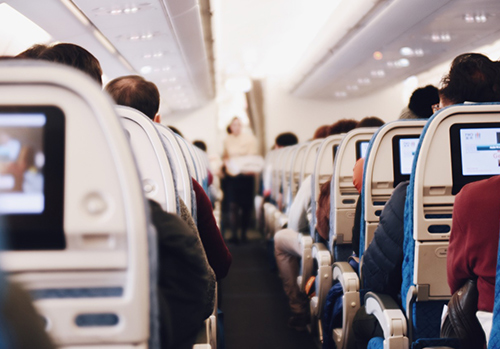
Photo by StockSnap on Pixabay.
If you’re planning on traveling this summer, there are probably a lot of flights in your future. And it can be hard to give up control to pilots and flight crew when your flight anxiety kicks in. This predicament becomes especially difficult when the plane begins to experience turbulence.
Turbulence is an irregular motion of the air resulting from eddies and vertical currents, usually associated with fronts, wind shear, thunderstorms, etc. The effects of turbulence can vary from a few bumps to momentarily throwing the airplane out of control or causing structural damage.
If that freaks you out, you’re not alone! About 40 percent of the U.S. population has a fear of flying. And turbulence is definitely a root cause.
So, when you are experiencing these bouts of bumpiness, how can you cure the flight anxiety that comes with it? Continue reading to learn some ways you can remain calm, up in the air.
Remember the Facts
It’s very easy to imagine all the worst-case scenarios when you fly. However, it’s vital to take a step back and remember the facts and statistics.
From 2009 to 2022, there have only been 34 passengers seriously injured due to turbulence. Just last year, in 2022, we only saw a total of four injuries to passengers and 13 to crew. That is a much smaller amount than the 1 in 93 chances of dying in a car crash. And most people are more than happy to ride in a car every single day!
Stay Sober
In order to calm your nerves, you may think that some liquor can do the trick, but you need to remember that what you eat and drink impacts your feelings and anxiety.
Drinking too much alcohol can dehydrate you and make you nauseous, which may exacerbate the queasiness that turbulence already gives you.
Breathing Exercises
Worrying about turbulence or experiencing it can make your heart begin to race. Controlling your breathing can be a simple way to help soothe your body.
A technique that can help ease your anxiety and even allow you to get some sleep during your flight is the 4-7-8 breathing method. The 4-7-8 breathing technique involves breathing in for 4 seconds, holding the breath for 7 seconds, and exhaling for 8 seconds.
Buckle Your Seatbelt
Most pilots are good at warning flyers when there are going to be areas of turbulence. However, it can come out of nowhere. This phenomenon is known as clear air turbulence. To feel safe during this time, experts advise you to always keep your seatbelt on regardless of whether the seatbelt light is on.
Got Medicare Questions?
We hope that this information on curing flight anxiety is useful to you.
Let us help you answer your questions so that you can get back to the activities that you enjoy the most.
Call (888) 446-9157, click here to get an INSTANT QUOTE, or leave a comment below!
See our other websites:

